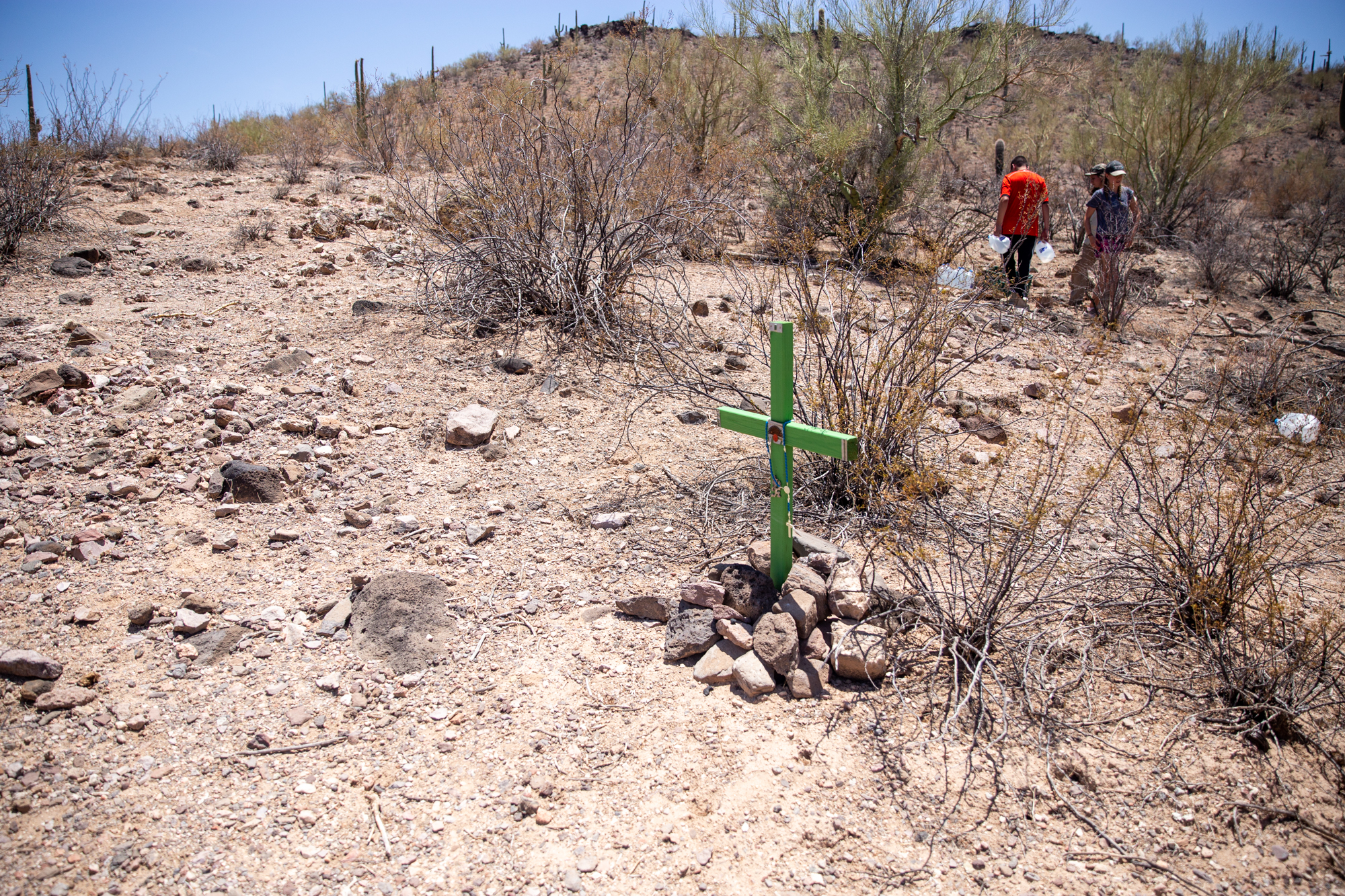- Slug: BC-CNS-Border Deaths,710
- File photo, graphic available (embed code, thumbnail, caption below)
By Tristan Richards
Cronkite News
WASHINGTON – Migrant deaths in Arizona’s deserts have fallen sharply so far this year, even as the number of immigrants caught trying to cross the state’s border with Mexico has been soaring.
Records kept by the Pima County Medical Examiner’s Office show that there were 136 bodies recovered in the desert from Jan. 1 to Sept. 1 this year, compared to 163 in the same period in 2021.
Customs and Border Protection numbers are not yet available for August, but the agency reported that migrant apprehensions in its Tucson and Yuma sectors jumped 75% through the end of July, going from 193,774 in the first seven months of last year to 340,399 in the same period this year.
Dr. Gregory Hess, Pima County medical examiner, said it would not be surprising to see a surge in deaths later this year, noting that the number “kind of just seesaws over time.” But for now, deaths are down despite punishing heat and drought gripping the state. Hess said he cannot pin down an exact reason why deaths have dropped so far.
“We had kind of a hot start to this year and then we had a fairly active monsoon season and now it got a little bit hot again,” Hess said. “We will see what happens for the rest of the year.”
The medical examiner’s numbers are supported by data from Humane Borders, a migrant-focused nonprofit that has been recording migrant deaths in the Arizona desert since 1981. It reported 126 deaths through the end of July, compared to 151 for the same period last year, when a record 225 bodies were recovered for the full year.
Despite the decrease in reported deaths, immigration advocates argue any death is one too many.
Paige Corich-Kleim, a volunteer for No More Deaths, an Arizona-based immigration advocacy group, said that just because reported deaths have fallen, it doesn’t mean immigrants aren’t suffering as they cross into the U.S.
“Ultimately, it’s not on the individuals to try to stay safer,” Corich-Kleim said. “The government should stop having deadly policies and that would keep people safe.”
Corich-Kleim blamed U.S. policy that “actively funnels people into harm’s way” by forcing them to cross at the most inhospitable parts the border. That was echoed by Jason DeLeón, executive director of the Colibrí Center for Human Rights, who pointed to the “prevention through deterrence” immigration policy of the last three decades.
“We have a policy in place that we continue to use and yet nobody wants to say it out loud,” DeLeón said. “Despite the fact that we rely on it so much and despite the fact that it has killed, and continues to kill, so many people.”
He said prevention through deterrence was introduced by U.S. Border Patrol in 1994. DeLeón is also head curator of the Undocumented Migration Project, an anthropological analysis of border crossings in northern Mexico and southern Arizona, that said the policy was “designed to discourage undocumented migrants from attempting to cross the U.S/Mexico border near urban ports of entry.”
It has remained in place through Republican and Democratic administrations, he said, despite what he called Democratic lawmakers’ “virtue-signaling” when it comes to border policies.
“On the Republican side, it’s always being tough on immigration as a way to pander to the right,” DeLeón said. “On the Democratic side there is always a lot of uproar about these perceived humanitarian crises.
“You know – a bunch of migrants die in Texas in the back of a truck and suddenly everybody is really concerned about border enforcement strategies,” DeLeón said. “Migrants die every single day and they have been every single day for the last 20 years.”
DeLeón maintains that the migrant deaths in the desert are “not collateral damage” but the result of the policy that he said needs to change. Deterrence is clearly not working, he said.
But he also said he had not seen any politicians propose policy that “meaningfully speaks to a type of immigration reform that would stop migrant deaths in the desert along the US-Mexico border.”
“People have been dying for decades now and that has not deterred anybody – it has just made border crossing more dangerous,” DeLeón said. “Migrants know that and they are going to keep coming.”
For more stories from Cronkite News, visit cronkitenews.azpbs.org.
^__=
Web links:
_ Migrant deaths: https://humaneborders.org/migrant-death-mapping/
_ Border encounters: https://www.cbp.gov/newsroom/stats/southwest-land-border-encounters
_ Humane Borders: https://humaneborders.org/
_ No More Deaths: https://nomoredeaths.org/en/
_ Colibrí Center: https://colibricenter.org/
_ Graphic embed code: <script id=”infogram_0_6cd202ee-f623-4d95-a6f3-b9fb36453712″ title=”Migrant deaths drop” src=”https://e.infogram.com/js/dist/embed.js?AiF” type=”text/javascript”></script>
^__=
Volunteers from No More Deaths leave water for migrants in this file photo from 2018. The number of migrant deaths in the Arizona desert has dropped this year from the record 225 last year, but advocates say there is no cause to rejoice with scores still dying. (File photo by Rebecca Spiess/Cronkite News)
